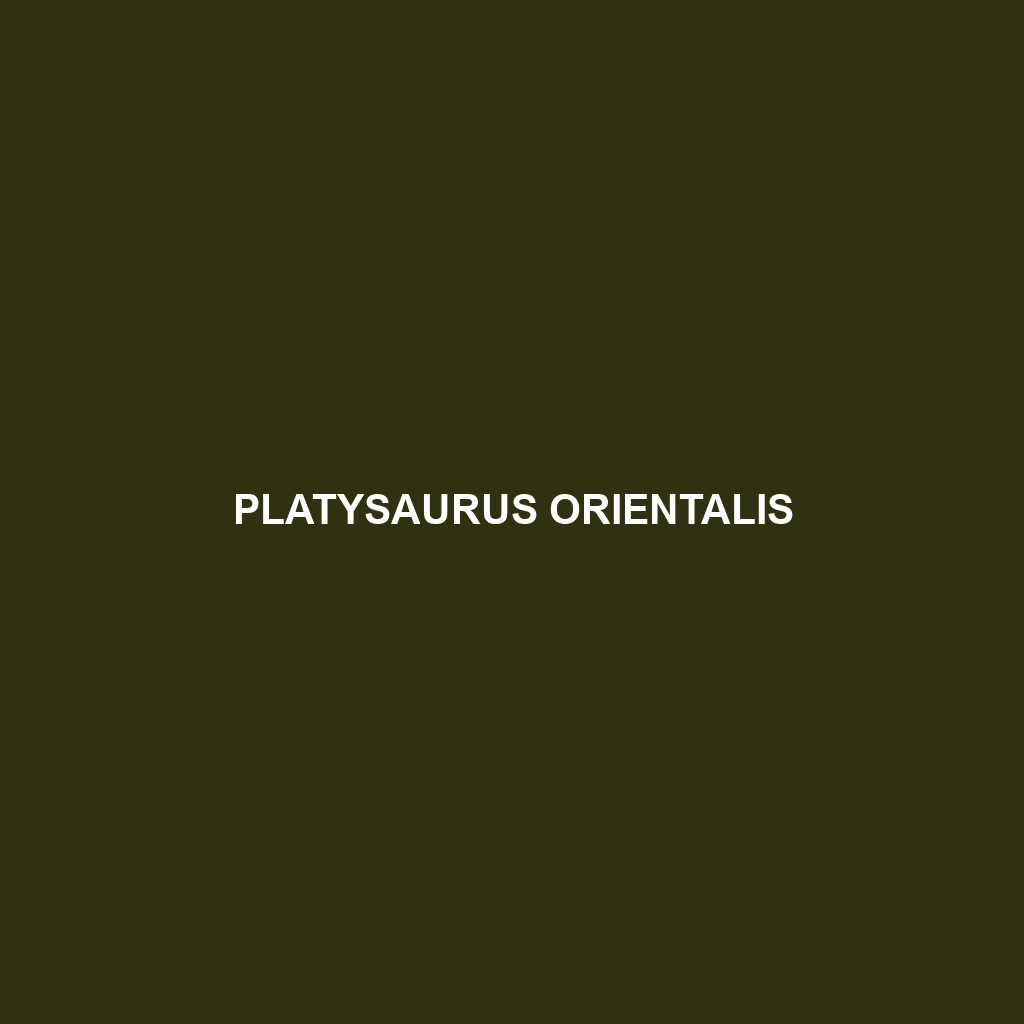Common Name
Platysaurus orientalis
Scientific Name
Platysaurus orientalis
Habitat
The Platysaurus orientalis, commonly known as the Eastern Flat Lizard, primarily inhabits a variety of environments across southern Africa. This species is predominantly found in savannas and temperate forests, favoring regions with rocky outcrops where they can bask safely in the sun. They thrive in warm climates and are often seen basking on exposed rocks during the day. The species is adapted to well-drained, sandy soils that support their burrowing habits, and they can also be found in areas depending on grasslands and woodlands. Understanding their natural habitats is crucial for conservation efforts, as these environments face threats from urban expansion and agriculture.
Physical Characteristics
Platysaurus orientalis is characterized by its striking colors and flattened body, which aids in camouflage among rocky terrains. Adult lizards can reach sizes of up to 12 inches (30 cm) in length. They exhibit sexual dimorphism; males typically have brighter, more vibrant colors often showcasing shades of blue, green, or orange along their bodies, while females tend to be more subdued in color—primarily brown or gray. Their distinct flat shape allows them to navigate through narrow crevices and evade predators effectively. The lizard also possesses long, slender limbs and a long tail, which assist in their agility and balance during movement.
Behavior
The behavior of Platysaurus orientalis is fascinating and varied. This species exhibits diurnal activity patterns, meaning they are mostly active during the day. Males often become highly territorial, engaging in displays that include head bobbing and push-ups to assert dominance and attract females. Their social interactions include complex mating rituals characterized by colorful displays and mating dances. These lizards are also known for their unique nocturnal behavior; while they are primarily active in daylight, some individuals may foray out during twilight hours. Their keen eyesight aids in spotting both predators and potential mates in their environment.
Diet
Platysaurus orientalis primarily feeds on a diet rich in insects and other small invertebrates, categorizing them as insectivores. Their diet may also include plant matter in small amounts, making them somewhat omnivorous in nature. They have developed a keen hunting strategy, often foraging actively among rocks and vegetation. Their feeding habits play a vital role in controlling insect populations within their habitats, thus maintaining a balanced ecosystem.
Reproduction
The reproductive cycle of Platysaurus orientalis is both intriguing and vital for the species’ continuity. Breeding season typically occurs during the warmer months, where female lizards seek male partners for mating. After a successful mating process, the female lays clutches of up to 10 eggs in a sheltered area, such as loose soil or under rocks, where they remain protected from predators. The incubation period lasts approximately 6 to 8 weeks, after which the hatchlings emerge, fully capable of a solitary life. Maternal care is minimal and primarily consists of choosing optimal laying locations, highlighting the species’ reliance on environmental factors for juvenile survival.
Conservation Status
According to the International Union for Conservation of Nature (IUCN), Platysaurus orientalis is currently listed as Least Concern; however, it faces several threats, including habitat destruction due to agricultural practices and urbanization. Conservation efforts are pivotal to protect their natural habitats and ensure the species’ longevity. Local initiatives focusing on habitat preservation and public education about the ecological significance of lizards contribute significantly to maintaining their populations.
Interesting Facts
One interesting fact about Platysaurus orientalis is its remarkable adaptability and resilience to changing environments. These lizards have developed a unique form of communication involving vibrant displays of color changes, allowing them to convey their mood and health to others. Additionally, Platysaurus orientalis demonstrates a fascinating ability to change skin color slightly to blend in with their targeted surroundings, providing effective camouflage against predators.
Role in Ecosystem
Platysaurus orientalis plays a crucial role in its ecosystem as both a predator and prey. As an insectivore, it helps regulate insect populations, contributing to soil health and plant growth. Their presence in the food chain supports larger predators, including birds and small mammals, ensuring ecological balance. Furthermore, they may serve as indicators of environmental health; their well-being often reflects the overall condition of their habitats, making them a key species in biodiversity studies. Conservation efforts directed toward maintaining lizard populations indirectly support broader ecological initiatives.
